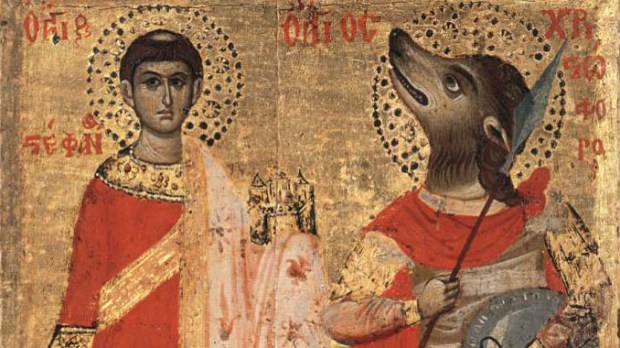St. Christopher is well known as the patron saint of travelers and modern depictions of the saint often show him carrying the Christ Child over a river. This is certainly a far cry from early icons that clearly show the famous saint with the head of a dog.
What’s the deal?
Many ancient cultures had a myth that featured a dog-headed race of men. This myth even continues today in the popular werewolf stories. The ancient myth was oddly enough translated into early Christianity and was at first a central part of the story surrounding St. Christopher.
Essentially the idea was that men who lost their way and turned to a life of sin acted like animals. Sin was always associated with the base animal desires of the flesh and some stories went so far to say that some men literally became part animal. The Egyptians were already familiar with depictions of the half-jackal, half-human god Anubis and so it naturally translated into Christian icons.
One story relates how St. Christopher was at first one of these dog-headed men and upon encountering the Christ Child, regained his human appearance. It is primarily symbolic, showing how Christopher left his animal-like ways and embraced the gospel. Early Christians, especially in Egypt, decided to depict Christopher with a dog head to reference this story of conversion.
It’s a fascinating story, but one image you probably won’t find on your St. Christopher medal or holy card.
Read more:
Dragons, unicorns, cynocephali: the favorite monsters of the Middle Ages

